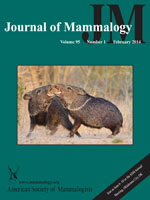After centuries of population decline and range contraction, gray wolves (Canis lupus) are now expanding in Europe. Understanding wolf social structure and population dynamics and predicting their future range expansion is mandatory to design sound conservation strategies, but field monitoring methods are difficult or exceedingly expensive. Noninvasive genetic sampling offers unique opportunities for the reliable monitoring of wolf populations. We conducted a 9-year-long monitoring program in a large area (approximately 19,171 km2) in northern Italy, aiming to identify individuals, estimate kinship, reconstruct packs, and describe their dynamics. Of 5,065 biological samples (99% scats), we genotyped and sexed 44% reliably using 12 unlinked autosomal microsatellites, 4 Y-linked microsatellites, and a diagnostic mitochondrial DNA control-region sequence. We identified 414 wolves, 88 dogs, and 16 wolf × dog hybrids. Wolves in the study area belonged to at least 42 packs. We reconstructed the genealogy of 26 packs. The mean pack size was 5.6 ± 2.4 SD, including adoptees, with a mean minimum pack home range of 74 km2 ± 52 SD. We detected turnovers of breeding pairs in 19% of the packs. Reproductive wolves were unrelated and unrelated dispersers founded new packs, except for 1 pack founded by a brother–sister pair. We did not detect multiple breeding females in any packs. Overall, the population was not inbred. We found significant isolation by distance and spatial autocorrelation, with nonrandom genetic structure up to a distance of approximately 17 km. We detected 37 dispersers, 14 of which became breeders in new or already existing packs. Our results can be used to model habitat use by wolves, to estimate survival rates, to predict future expansion of the wolf population, and to build risk maps of wolf–human conflicts.
How to translate text using browser tools
1 February 2014
Noninvasive sampling and genetic variability, pack structure, and dynamics in an expanding wolf population
Romolo Caniglia,
Elena Fabbri,
Marco Galaverni,
Pietro Milanesi,
Ettore Randi

Journal of Mammalogy
Vol. 95 • No. 1
February 2014
Vol. 95 • No. 1
February 2014
Canis lupus
conservation genetics
gray wolf
inbreeding
kinship
noninvasive genetic sampling
pack structure




